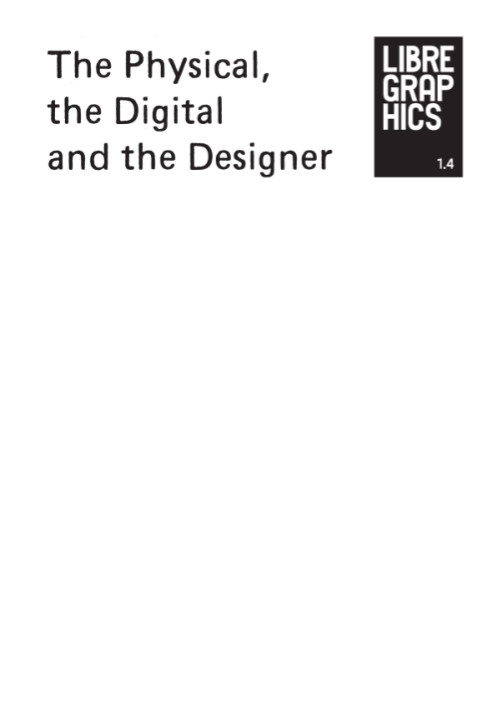Andrea Gleiniger, Angelika Hilbeck, Jill Scott (eds.): Transdiscourse 1: Mediated Environments (2011)
Filed under book | Tags: · agriculture, architecture, art and science, climate crisis, design, documentary film, eco art, ecology, energy, environment, permaculture, recycling

– Encourages critical reflections that shed light on how combinations of art, architecture, technology and science could directly impact urban societies and their rural alternative
– Discusses the know-how-transfer between the arts and the sciences is facilitated
Mediated Environments addresses the problem that society interprets our environment through conditioned and constructed representations of mainstream media and not in a transdisciplinary way with the help of artists, architects, filmmakers, cultural theorists and scientists. The writers who come from these various backgrounds all wish to give media artists, designers and writers a new role in relation to the pressing issues of urban and rural life: ones that can address the challenges of human psychology, recycling, agricultural production, climate chaos and energy conservation. The main aims were to focus on the potentials of creative work to raise public awareness and to find new discourses that can be shared within the areas of mediated architecture, eco art, experimental documentary film, eco-emergent design and art and science collaborations. The editors believe that a closer transdisciplinary working relationship could encourage a more tangible approach to these problems of the future.
Publisher Springer, 2011
Producer Zurich University of the Arts (ZHdK)
ISBN 3709102871, 9783709102879
216 pages
Alessandro Colizzi: Bruno Munari and the Invention of Modern Graphic Design in Italy, 1928-1945 (2011)
Filed under thesis | Tags: · 1920s, 1930s, 1940s, art, avant-garde, constructivism, design, futurism, graphic design, italy, painting, typography

“Despite the difficult political conditions under the Fascist regime, Italy saw its own modernist wave hit the commercial arts in the 1930s, resulting from a complex interplay of factors as diverse as the weight of Futurism, the rise of advertising, and the debate surrounding Rationalist architecture. This research examines Bruno Munari’s work as a graphic designer from the late 1920s to mid-1940s, with the aim of understanding the emergence and characteristics of the modernist trend in Italian graphic design. Taking shape in Milan, this original ‘design culture’ eclectically brought together two quite different strains of Modernity: a local tradition represented by the Futurist avant-garde, and a European tradition associated with Constructivism. Munari (1907–1998) worked simultaneously as painter and as advertising designer: he debuted with the Futurists, whose broader cultural reach he shared, while also remaining open to other currents—such as Dadaism and Surrealism—and ultimately aligned himself with a more Abstractionist stance. Insofar as he was an exponent of the new advertising profession, his design work also reflects its evolution, mixed references, aspirations, and limits. Concentrating on Munari’s stylistic development, the study seeks to explore the interaction between the Futurist visual vocabulary and conceptions coming from architecture, photography, abstract painting, and functionalist typography trickling in from central and northern Europe. Hence, the discussion positions the designer in his time and place, concentrating as much on the artefacts as on the broader cultural framework. Secondly, the study attempts to assess Munari’s reputation against a body of exemplary work, based on firsthand documentation. It is the first extensive, detailed record of Munari’s graphic design output, and as such provides a substantial base for a full understanding of his œuvre. While Munari’s evolution is dealt with chronologically, the analysis of his graphic works highlights key areas of visual interest, offering a cross reading that sheds light on their underlying poetics, themes, and formal attributes. In its trajectory, Munari’s wide-ranging graphic design work shows how modernist ideas were received and assimilated in the Milanese environment of the 1930s, as well as the shift in conceptions of the graphic design profession—from one related to avant-garde art practice to a Modern one, based on rational idioms. The roots of modern Italian graphic design, which fully emerged after 1945, can be traced to this heterogeneous legacy—and it is no coincidence that Munari became one of the fields’ leading exponents.” (Abstract)
Doctoral Thesis
Faculty of Humanities, Leiden University Academy of Creative and Performing Arts
Promotor: G. Unger
Co-promotor: T.M. Eliëns
PDF (Works section missing)
PDFs
Libre Graphics Magazine 1.4: The Physical, the Digital and the Designer (2012)
Filed under magazine | Tags: · design, floss, graphic design, graphics, libre graphics, open source, software

The fourth issue of magazine on open source graphic design and graphics.
Editorial team: Ana Carvalho, Ginger Coons, Ricardo Lafuente
Publisher: Ginger Coons, May 2012
Creative Commons Attribution-Share Alike license (CC-BY-SA)
ISSN 1925-1416
52 pages
PDF (low-res version, 19 MB)
PDF (high-res version, 455 MB)

